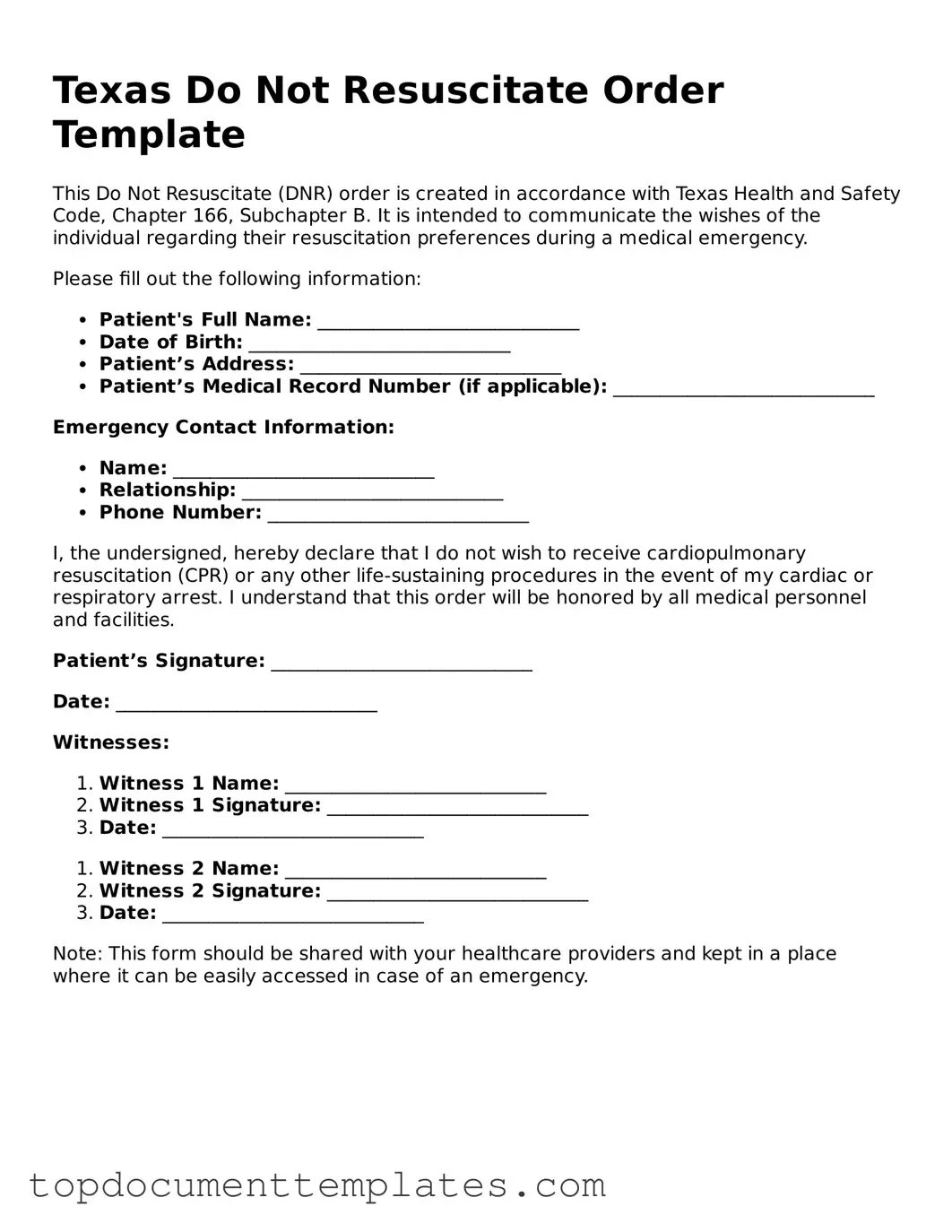In the state of Texas, the Do Not Resuscitate (DNR) Order form plays a crucial role in respecting the medical wishes of individuals facing serious health challenges. This form empowers patients to communicate their preferences regarding resuscitation efforts in the event of a cardiac or respiratory arrest. It is essential for individuals, especially those with terminal illnesses or severe health conditions, to understand how to properly complete and execute this document. The DNR Order must be signed by a physician and should be clearly visible in the patient's medical records. It can also be printed and kept on hand for emergencies, ensuring that first responders are aware of the patient's wishes. Additionally, family members and caregivers should be informed about the existence of the DNR to avoid confusion during critical moments. By having a DNR Order in place, patients can maintain control over their end-of-life care, ensuring that their values and preferences are honored during some of the most challenging times. Understanding the nuances of this form not only aids in effective communication with healthcare providers but also fosters peace of mind for patients and their loved ones.
